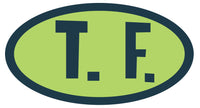
Hey–
I elected not to go to the art fairs in New York this week. I actually haven’t been going to them for a while now and I don’t miss them. I think as recently as 10 years ago, I still enjoyed them. It was thrilling to see work I’d not seen before and art that excited me. And then a curious thing happened–the art market became a beast unto itself and the lines between art and fashion became irrevocably blurred. It became high school with money. Some will argue that this was always the case and they would be wrong; before art fairs became a growth industry, there was actually something kind of innocence about them. They had a wonderful capacity to surprise you and weren’t inhabited by as many “advisers,””consultants,” and “freelance curators”–the fleas and ticks of the art world. There weren’t jaded, wall-street types building hedge-funds comprised of art objects; or at least as many. What we made was Art. Not Product. This was how we entered the world in a meaningful way. This was our definition.
Most of you know that for the last two years, I’ve spent a lot of time in New Orleans; a lot of time around people at the other end of the economic scale, and it’s been something of an epiphany. I’ve watched an art community down there hold each other up in the face of economic calamity and horrific tragedy. They made art out of whatever they could scavenge, borrow, find, afford, with no promise of anyone ever buying it. They made art to add meaning to their lives, and to them it was absolutely necessary. They weren’t thinking about “careers.” They were doing this because they hadn’t a choice about whether to create or not. It was a powerful lesson, and one that I am grateful for. I like to think that this was the place where I reclaimed my purpose as an artist.
I started making these hobo pieces as a way to honor the memory of Studs Terkel. I’ve recently reread his towering oral history of The Great Depression, Hard Times, and this text seems to go hand in hand with some of the thoughts I began to have in New Orleans about the nature of class and poverty; how powerfully people without political or economic advantage are compelled to create. Blues and jazz have their genesis in grinding poverty; so does quilting and carving. Hobos even had their own art form, referred to colloquially as “Tramp Art.” I’m not sure where all of this will lead me, but it’s a journey I am glad to take. It has changed the way I move in the world.
This one is the hobo symbol for “Religious People in this town.”‘
It’s called, “The Red Road.”
